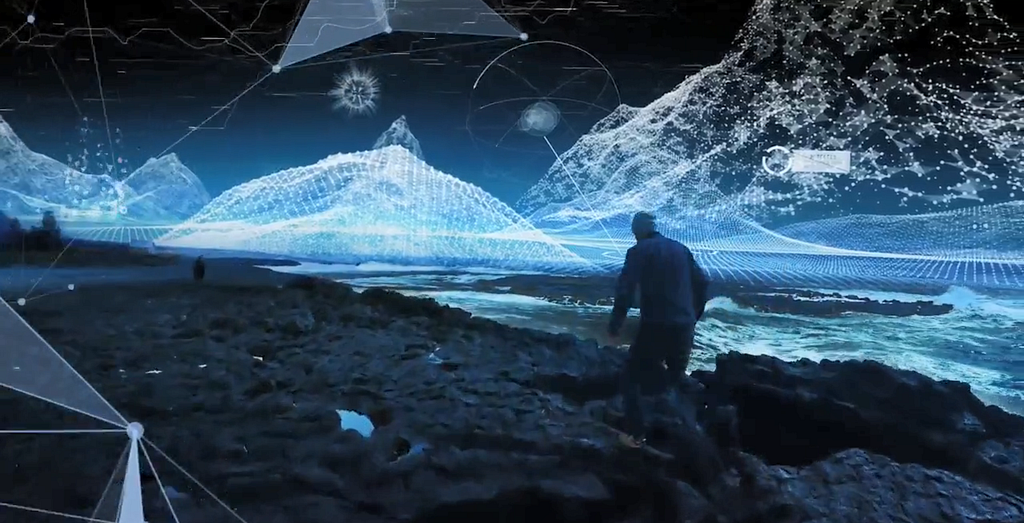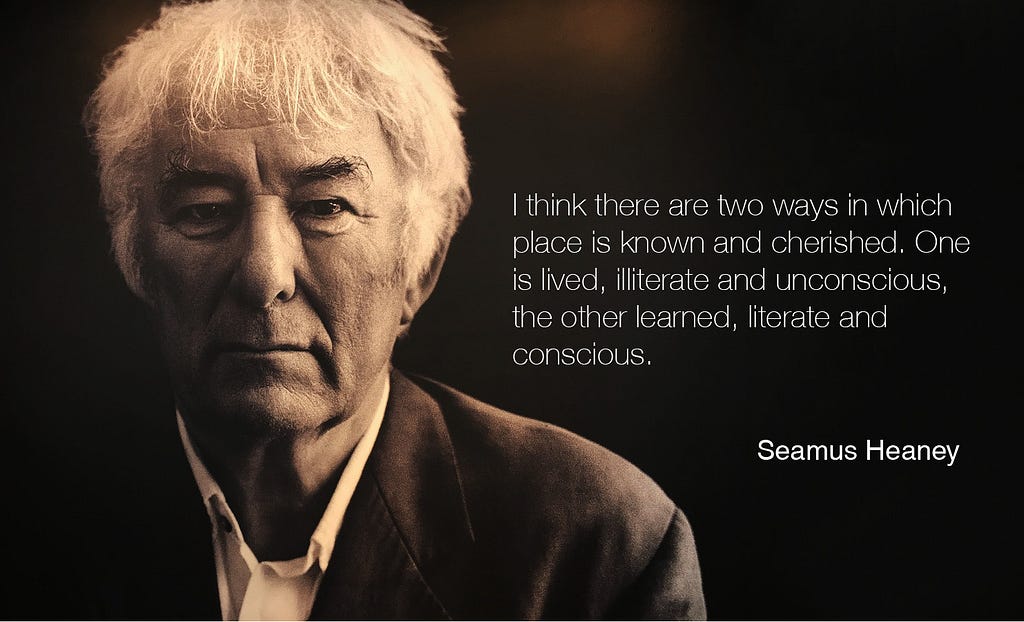Latest news about Bitcoin and all cryptocurrencies. Your daily crypto news habit.
“What it will be, what it can be, I think it’s profound”, Tim Cook on Augmented Reality. What if the world’s knowledge was not a click away, but at a glance? What if technology enabled your narrative to intersect and interact with the land around you? And what if this was accessible not to a few, buy everyone? This type of ability is within reach and is what I call the enabled landscape.
The Enabled Landscape is augmented reality that intersects with the landscape. Or to describe in another way, the Enabled Landscape is personal computing that enhances and amplifies the physical experience of simultaneously arriving at and travelling through the landscape via seamless and live computer-generated sensory inputs (graphical, video, or sound information) that are uniquely associated to that place. Landscape being both the visible features of an area of land and how they integrate with natural or humanmade elements and also the historical, cultural and personal significance of the landscape, its sense of place.
Another way to think of it is as a new medium. Humans have communicated knowledge of earth and our interaction with it via such mediums as stone, timber, papyrus, and paper. In this context, the medium of one-way personal computer screens, together with connectivity via the internet, was an extraordinary feet forward, reaching more people than ever before. Now a medium of glass, a two way, real-time, personal display offers a revolutionary, order of magnitude greater tectonic shift of such communication.
 the enabled landscape, the intersection of our landscape and our digital world
the enabled landscape, the intersection of our landscape and our digital world
The concept builds off the term ‘paper landscape’ coined by Irish Geographer JH Andrews 60 years ago. A ‘paper landscape’ was used to describe the most detailed mapping survey of an entire country ever achieved at the time, accomplished in Ireland over 170 years ago. It also refers to the select geographical areas (primarily in the North of Ireland) where every possible aspect of the landscape from its place name, archaeology, visual recordings, its productive economy were recorded — even in places the fashion sense (!) was captured and shared with the world. An extraordinary, never before achieved, a world first, technical innovation combined with liberal art sensibilities.
By the nature of the effort multiple sectors and industries would benefit as the world could be understood better. Culturally, the work would directly influence some of Ireland’s and humanity’s most celebrated literary works — James Joyce’s encyclopaedism, Samuel Beckett’s abstract landscapes, John Synge’s overlapping scales, and Seamus Heaney’s investigation of place, each a ground-breaking formal literary innovation. An enabled landscape is both the data and the tool to serve our next generation of creatives.
An enabled landscape
Irish poet Patrick Kavanagh once said, ‘The whole landscape is a manuscript which we have lost the skill to read’. An enabled landscape offers as an antidote to this. It is the decoding of our real-world In an enabled landscape portable hardware connects to the internet and places augmented information within our senses, our field of view for example. People will be able to choose tailored and personalised streams of digital data when present at particular locations. The entire world becomes a shared spatial screen enabling multi-user engagement and collaboration. It will enable people to collaborate in play, design, study, or team-up to problem solve anything in the real world.
An enabled landscape can enhance understanding the sense of place as it becomes a conduit between the geographical country and country of the mind. Seamus Heaney tells us ‘it is the feeling, assenting, equable marriage between the geographical country and the country of the mind, whether that country of the mind takes its tone unconsciously from a shared oral inherited culture, or from a consciously savoured literary culture, or from both, that constitutes the sense of place in its richest possible manifestation’.
tomorrow’s world, the construction has started
To realise this a core component of the underlying required infrastructure is a real-time three-dimensional spatial map of the world. A soft copy of the world that allows you to reorganise information at its origin — in the physical world. This has been referred to by some as the AR cloud and has been professed that it could be the single most critical software infrastructure in computing, to become more valuable than Facebook’s social graph, or Google’s page rank.
Specifically, an AR-friendly point cloud aligned to correspond with the real world geographic coordinates in six-dimensional space, and place virtual content and interact within it in real time, on-device and remotely. In the same way that Google indexes the web, the AR Cloud serves as an index of the real world, which can be used to align both content and devices to the same reference frame. With the AR Cloud, the how to use every object, the history of any place, the background of any person will be found right there on the thing itself. The demarcation of the physical surface becomes a piece of canvas (for unlimited user-generated content) and a cipher to decode the history of that surface and attach personal and communal meaning, just as Seamus Heaney sough historical understanding by transposing historical topology — location of topics within clearly designated conceptual spaces — upon topography.
A myriad of challenges lay ahead to realise an enabled landscape including — mass availability of survey grade location positing, desirable, wearable personal computer design, computational power, market environments, hardware miniaturisation, AR developer platforms, computer vision advances — This technology is not new however an inflexion point is at hand. The AR market global revenue is forecasted to reach over $115 billion by 2020, representing a more than ten-fold growth compared to 2017 estimated market size. Big tech has launched AR platforms. The global audience for AR media is predicted to pass one billion by 2020. AR is here to stay.
It will take time and iteration after iteration with a multitude of problems to solve, spanning hardware, software, content, and user experience. The basis of these enabling technologies are being developed, decisions are being made today. It is like the trajectory of a moving object. A minor change of a few degrees at the beginning can dramatically change the destination.
Does the above resonance with you? Are you helping to build this future? Please clap / share on social media to show your support and together we can get the message out there!
Thanks, Tom Forte
This is an introduction to a series I am exploring around the enabled landscape. I am still investigating. My next articles are entitled;
- a Hippocratic Oath for augmented reality
- why net neutrality should be extended into the physical, augmented world, Allemansrätten
- societal significance, a sense of place in an enabled landscape
- simplicity, geography and product design …
- the start-ups and establish tech building the enabled landscape spanning hardware, software, and content
/ the enabled landscape is the / digital landscape / connected landscape / reality operating system / augmented landscape / enhanced landscape /
the future, the reality Operating System, an enabled landscape was originally published in Hacker Noon on Medium, where people are continuing the conversation by highlighting and responding to this story.
Disclaimer
The views and opinions expressed in this article are solely those of the authors and do not reflect the views of Bitcoin Insider. Every investment and trading move involves risk - this is especially true for cryptocurrencies given their volatility. We strongly advise our readers to conduct their own research when making a decision.
